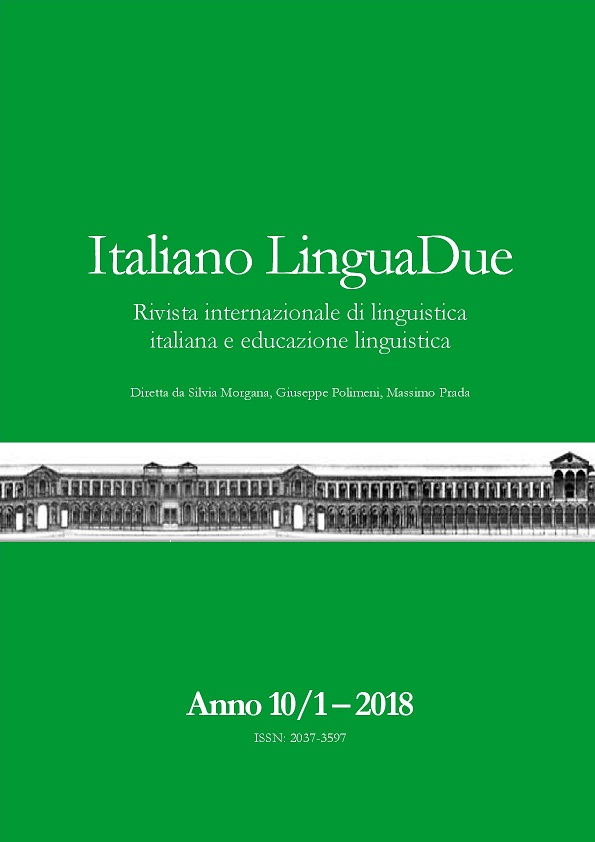LA SPIEGAZIONE DELLA PERIFRASI PROGRESSIVA NELLE GRAMMATICHE D’ITALIANO PER STRANIERI: ANALISI DI ALCUNI TESTI E PROPOSTE GLOTTODIDATTICHE ISPIRATE ALLA LINGUISTICA COGNITIVA
DOI:
https://doi.org/10.13130/2037-3597/10384Abstract
L’articolo si focalizza sull’insegnamento della perifrasi progressiva stare + gerundio agli studenti di italiano come seconda lingua. La prima parte fornisce una panoramica degli studi di linguistica italiana che mette in luce alcune caratteristiche semantiche e sintattiche specifiche di questa costruzione rispetto ad altre lingue, come ad esempio l’inglese. La seconda parte discute i risultati di un’analisi della qualità delle spiegazioni fornite per la perifrasi progressiva da sei recenti grammatiche dell’italiano per stranieri. L’analisi mostra come le caratteristiche semantiche e sintattiche specifiche di questa costruzione siano per lo più trascurate, il che potrebbe dare agli studenti l’impressione che questa perifrasi sia simile nel significato e negli usi alla forma progressiva in inglese. La terza parte fornisce alcuni spunti teorici e metodologici su come elaborare spiegazioni più accurate, significative e accessibili della perifrasi progressiva nel contesto dell’italiano come seconda lingua. I suggerimenti forniti fanno riferimento alla linguistica cognitiva, un approccio relativamente recente allo studio del linguaggio che sta ottenendo molta attenzione nel campo della linguistica dell’educazione, in quanto vi è un numero crescente di studi che ne mostrano i benefici pedagogici nell’insegnamento grammaticale in una seconda lingua.
An explanation of progressive periphrasis in italian grammars for foreigners: analysis of texts and language teaching proposals inspired by cognitive linguistics
The paper focuses on the teaching of the progressive periphrasis stare + gerund to learners of Italian as a second language. The first part provides an overview of the studies on this construction conducted in the field of Italian Linguistics, highlighting specific semantic and syntactic features of this construction with respect to other languages, such as English. The second part discusses the results of an analysis of the quality of the explanations provided for the progressive periphrasis in a sample of six recent grammars of Italian for foreigners. The analysis shows that the specific semantic and syntactic features of this construction are mostly overlooked, which might give learners the impression that this periphrasis is similar in meaning and uses to the progressive form in English. The third part provides some theoretical and methodological insights on how to elaborate more accurate, meaningful and accessible explanations of the progressive periphrasis in the context of Italian as a second language. The suggestions provided are inspired by Cognitive Linguistics, a relatively recent approach to the study of language that is getting much attention in the field of Educational Linguistics, as there is a growing number of studies showing its pedagogical benefits for grammar instruction in a second language.




